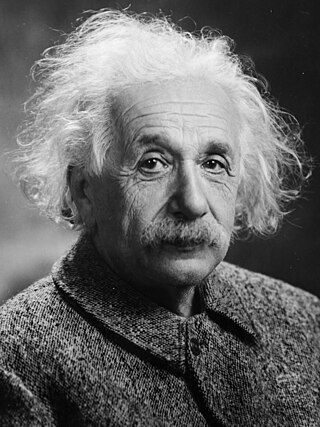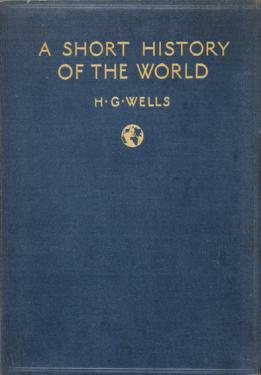
An empire is a political unit made up of several territories and peoples, "usually created by conquest, and divided between a dominant center and subordinate peripheries". The center of the empire exercises political control over the peripheries. Within an empire, different populations have different sets of rights and are governed differently. Narrowly defined, an empire is a sovereign state whose head of state is an emperor or empress; but not all states with aggregate territory under the rule of supreme authorities are called empires or are ruled by an emperor; nor have all self-described empires been accepted as such by contemporaries and historians.

Sovereignty can generally be defined as supreme authority. Sovereignty entails hierarchy within the state, as well as external autonomy for states. In any state, sovereignty is assigned to the person, body or institution that has the ultimate authority over other people in order to establish a law or change existing laws. In political theory, sovereignty is a substantive term designating supreme legitimate authority over some polity. In international law, sovereignty is the exercise of power by a state. De jure sovereignty refers to the legal right to do so; de facto sovereignty refers to the factual ability to do so. This can become an issue of special concern upon the failure of the usual expectation that de jure and de facto sovereignty exist at the place and time of concern, and reside within the same organization.

The United Nations (UN) is a diplomatic and political international organization whose stated purposes are to maintain international peace and security, develop friendly relations among nations, achieve international cooperation, and serve as a centre for harmonizing the actions of nations. It is the world's largest international organization. The UN is headquartered in New York City, and the UN has other offices in Geneva, Nairobi, Vienna, and The Hague, where the International Court of Justice is headquartered at the Peace Palace.
World government is the concept of a single political authority with jurisdiction over all of Earth and humanity. It is conceived in a variety of forms, from tyrannical to democratic, which reflects its wide array of proponents and detractors.
The Emergency Committee of Atomic Scientists (ECAS) was founded by Albert Einstein and Leó Szilárd in May, 1946, primarily as a fundraising and policy-making agency. Its aims were to warn the public of the dangers associated with the development of nuclear weapons, promote the peaceful use of nuclear energy, and ultimately work towards world peace, which was seen as the only way that nuclear weapons would not be used again.
A supranational union is a type of international organization that is empowered to directly exercise some of the powers and functions otherwise reserved to states. A supranational organization involves a greater transfer of or limitation of state sovereignty than other kinds of international organizations.

The Russell–Einstein Manifesto was issued in London on 9 July 1955 by Bertrand Russell in the midst of the Cold War. It highlighted the dangers posed by nuclear weapons and called for world leaders to seek peaceful resolutions to international conflict. The signatories included eleven pre-eminent intellectuals and scientists, including Albert Einstein, who signed it shortly before his death on 18 April 1955. Shortly after the release, philanthropist Cyrus S. Eaton offered to sponsor a conference—called for in the manifesto—in Pugwash, Nova Scotia, Eaton's birthplace. The conference, held in July 1957, became the first of the Pugwash Conferences on Science and World Affairs.

Citizens for Global Solutions is a grassroot level membership organization in the United States working towards establishment of world government in order to avoid future atomic wars.

Emery Reves was a writer, publisher and successful press and literary agent most notably for Winston Churchill and other prominent European statesmen who were predominantly antifascist and held democratic ideals. He advocated that world federalism might bring peace to a post-war world.
The Baruch Plan was a proposal put forward by the United States government on 14 June 1946 to the United Nations Atomic Energy Commission (UNAEC) during its first meeting. Bernard Baruch wrote the bulk of the proposal, based on the March 1946 Acheson–Lilienthal Report. The Soviet Union, fearing the plan would preserve the American nuclear monopoly, declined in December 1946 in the United Nations Security Council to endorse Baruch's version of the proposal, and the Cold War phase of the nuclear arms race followed.

The United Nations Security Council veto power is the power of the five permanent members of the UN Security Council to veto any "substantive" resolution. They also happen to be the nuclear-weapon states (NWS) under the terms of the Treaty on the Non-Proliferation of Nuclear Weapons. However, a permanent member's abstention or absence does not prevent a draft resolution from being adopted. This veto power does not apply to "procedural" votes, as determined by the permanent members themselves. A permanent member can also block the selection of a Secretary-General, although a formal veto is unnecessary since the vote is taken behind closed doors.
Global citizenship is the idea that one's identity transcends geography or political borders and that responsibilities or rights are derived from membership in a broader class: "humanity". This does not mean that such a person denounces or waives their nationality or other, more local identities, but that such identities are given "second place" to their membership in a global community. Extended, the idea leads to questions about the state of global society in the age of globalization.
Chapter VII of the United Nations Charter sets out the UN Security Council's powers to maintain peace. It allows the Council to "determine the existence of any threat to the peace, breach of the peace, or act of aggression" and to take military and nonmilitary action to "restore international peace and security".
The Westphalian system, also known as Westphalian sovereignty, is a principle in international law that each state has exclusive sovereignty over its territory. The principle developed in Europe after the Peace of Westphalia in 1648, based on the state theory of Jean Bodin and the natural law teachings of Hugo Grotius. It underlies the modern international system of sovereign states and is enshrined in the United Nations Charter, which states that "nothing ... shall authorize the United Nations to intervene in matters which are essentially within the domestic jurisdiction of any state."

Albert Einstein (1879–1955), a German-born scientist, was predominantly known during his lifetime for his development of the theory of relativity, his contributions to quantum mechanics, and many other notable achievements in modern physics. However, his political views also garnered much public interest due to his fame and involvement in political, humanitarian, and academic projects around the world.
A world constitution refers to a proposed framework or document aimed at establishing a system of global governance. It seeks to provide a set of principles, structures, and laws to govern the relationships between states and address global issues. The concept of a world constitution reflects the aspiration for greater international cooperation, peace, and the resolution of global challenges.

A Short History of the World is an account of human history by English author H. G. Wells. It was first published in 1922 by Cassell & Company (London) and The Macmillan Company. The book was preceded by Wells's fuller 1919 work The Outline of History, and was intended "to meet the needs of the busy general reader, too driven to study the maps and time charts of that Outline in detail, who wishes to refresh and repair his faded or fragmentary conceptions of the great adventure of mankind."
Carl Seelig was a German-Swiss writer and patron. He was best known as a friend, promoter and guardian of Robert Walser and the first biographer of Albert Einstein.

The following events occurred in October 1945:
World federalism or global federalism is a political ideology advocating a democratic, federal world government. A world federation would have authority on issues of global reach, while the members of such a federation would retain authority over local and national issues. The overall sovereignty over the world population would largely reside in the federal government.









